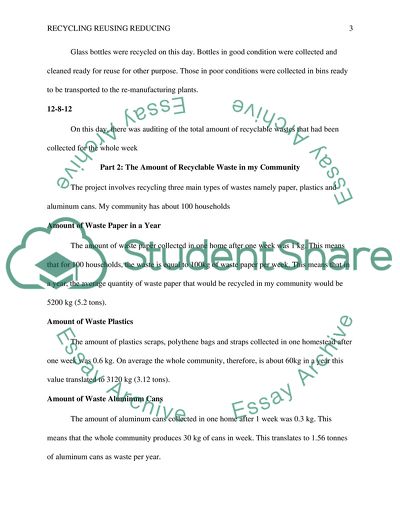Cite this document
(Recycling, Reducing, and Reusing Report Example | Topics and Well Written Essays - 1500 words, n.d.)
Recycling, Reducing, and Reusing Report Example | Topics and Well Written Essays - 1500 words. https://studentshare.org/environmental-studies/1790546-recycling-reducing-and-reusing
Recycling, Reducing, and Reusing Report Example | Topics and Well Written Essays - 1500 words. https://studentshare.org/environmental-studies/1790546-recycling-reducing-and-reusing
(Recycling, Reducing, and Reusing Report Example | Topics and Well Written Essays - 1500 Words)
Recycling, Reducing, and Reusing Report Example | Topics and Well Written Essays - 1500 Words. https://studentshare.org/environmental-studies/1790546-recycling-reducing-and-reusing.
Recycling, Reducing, and Reusing Report Example | Topics and Well Written Essays - 1500 Words. https://studentshare.org/environmental-studies/1790546-recycling-reducing-and-reusing.
“Recycling, Reducing, and Reusing Report Example | Topics and Well Written Essays - 1500 Words”. https://studentshare.org/environmental-studies/1790546-recycling-reducing-and-reusing.


